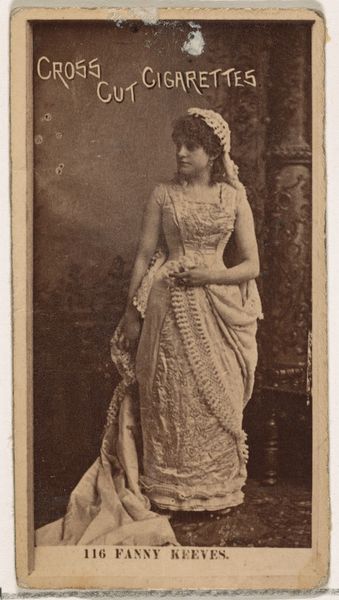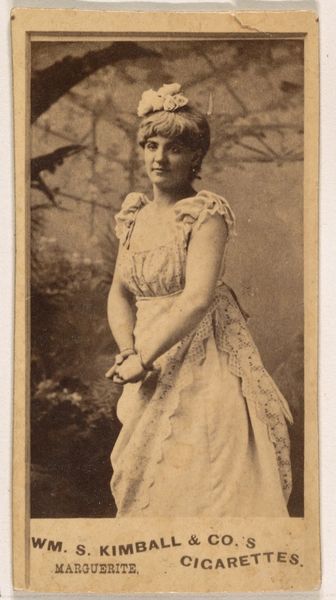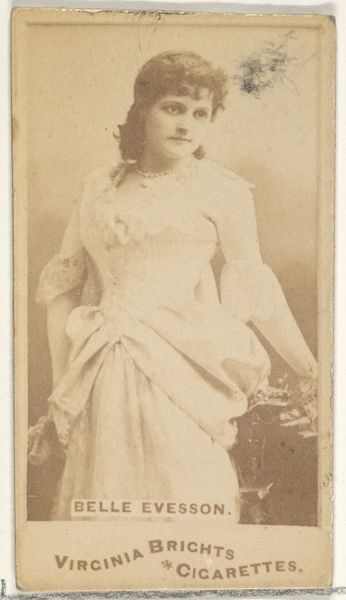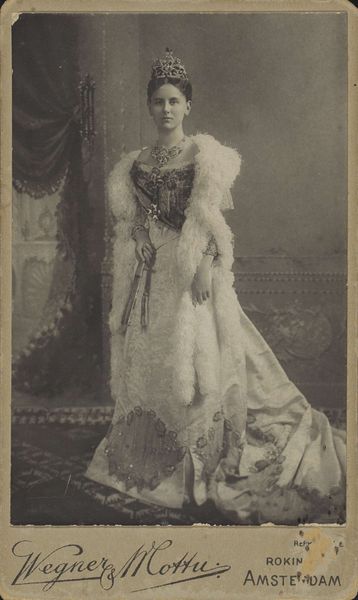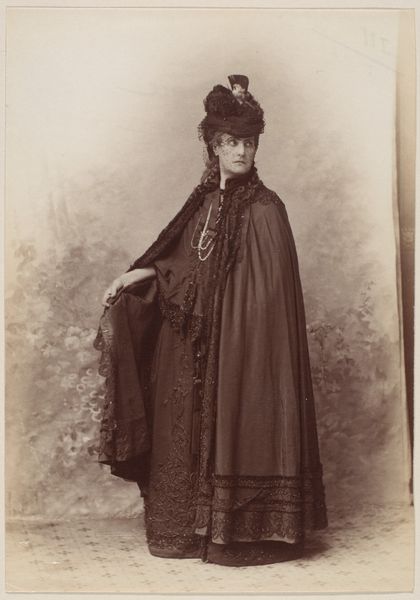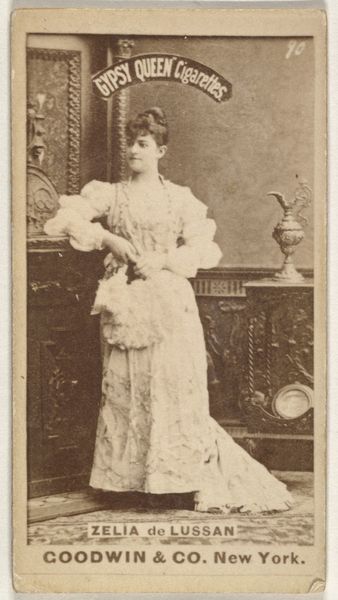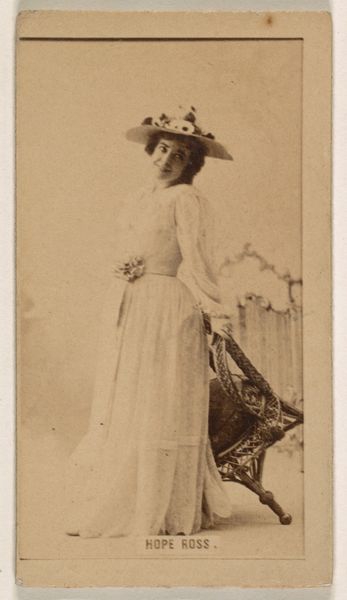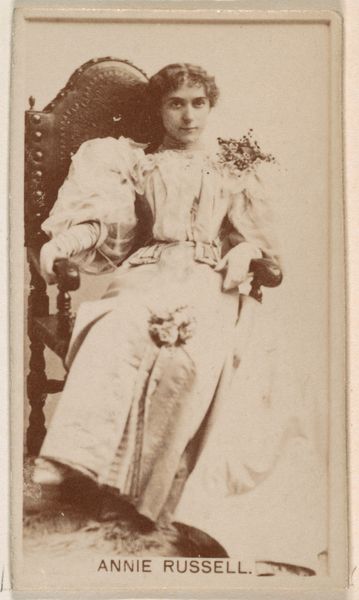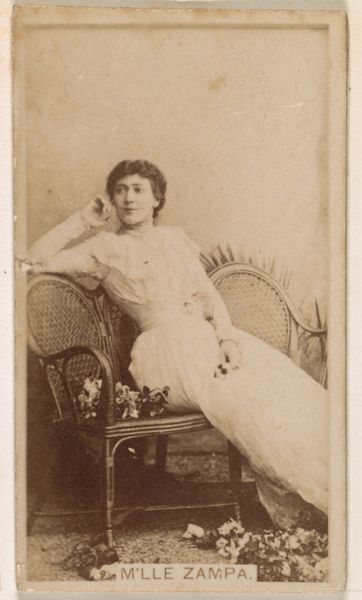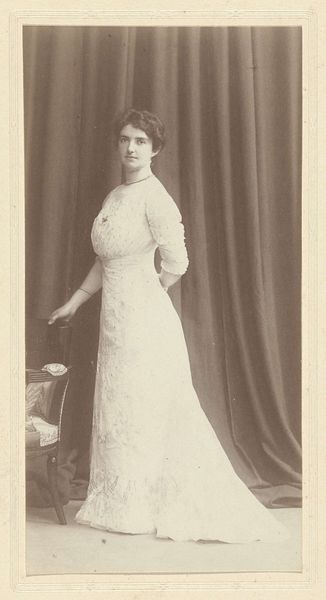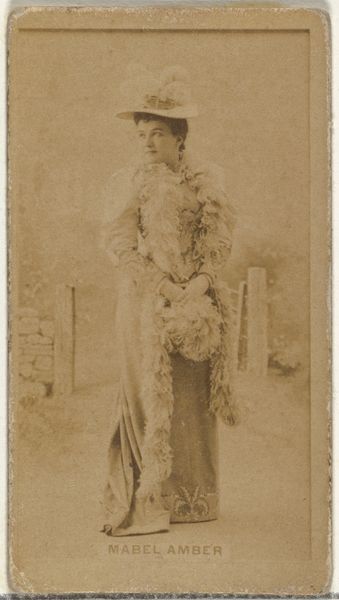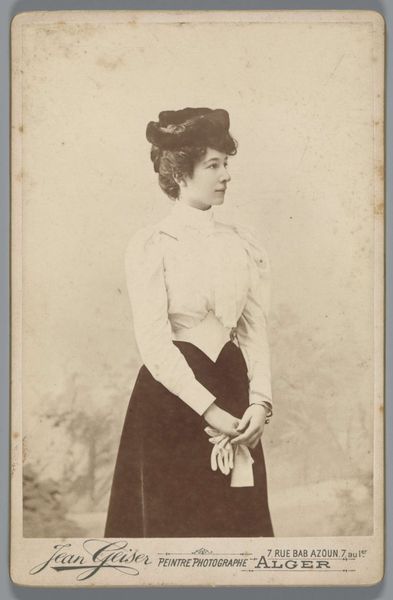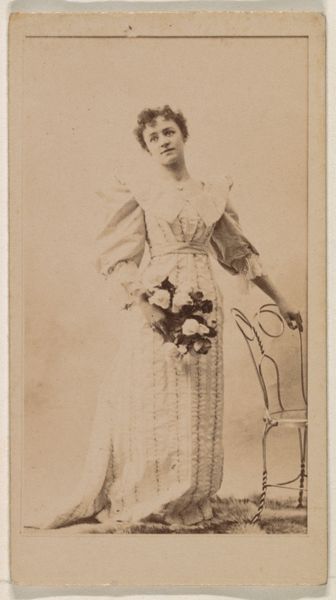
photography, albumen-print
#
portrait
#
photography
#
albumen-print
Dimensions: height 194 mm, width 128 mm, height 240 mm, width 160 mm
Copyright: Rijks Museum: Open Domain
Curator: Here we have an albumen print from somewhere between 1890 and 1910, entitled "Portret van de actrice Andrée Mégard," currently residing here at the Rijksmuseum. Editor: Oh, it has this beautifully faded quality that makes it seem like a dream. It’s almost ethereal, the way her white dress blends with the background. It looks like she is almost dissolving into thin air. Curator: Albumen prints, popular then, involved coating paper with egg white, making them exceptionally sensitive to light, perfect for capturing details. Her clothing seems deliberately chosen to highlight this sensitivity, its texture emphasized through the chemical process. I find the very production and printing of such an image tells you a story about social aspirations during this era. Editor: I see it too. The light drapes around her, accentuating her stillness—yet, there’s an intense, inner life there as well. Look at how carefully her dress is crafted, like something designed to contain emotion while projecting beauty to the world. Curator: Absolutely, the texture itself becomes a kind of commodity display, doesn’t it? Something manufactured through exploitative colonial economies that fed industrialization. Lace, in particular, signifies wealth due to the meticulous labour involved in its manufacture. Editor: It's strange because the very tangible effort you mention in creating the lace and even producing the photo enhances an elusive air. Perhaps this comes from the actress; her role and craft and even her holding a book all feel symbolic and open ended. There is some secret withheld. I'm sure you notice that the surface is ever-so-slightly aged, as if it had something very important to say at the time, but can't bring itself to speak anymore. Curator: You can certainly interpret that, and you are correct to notice the surface aging process, because over time albumen prints yellow and fade, impacting not just the aesthetic appeal but the photograph's long-term viability as a document or art object. Yet that too indicates the materiality of culture. Editor: Precisely. Looking at this work it isn’t about only seeing something but feeling its past presence like a memory and seeing our future reflection too. Curator: Indeed. These insights have revealed both how processes of industrial manufacture impact our understanding, and your view reveals that images transform our perceptions through imagination.
Comments
No comments
Be the first to comment and join the conversation on the ultimate creative platform.
